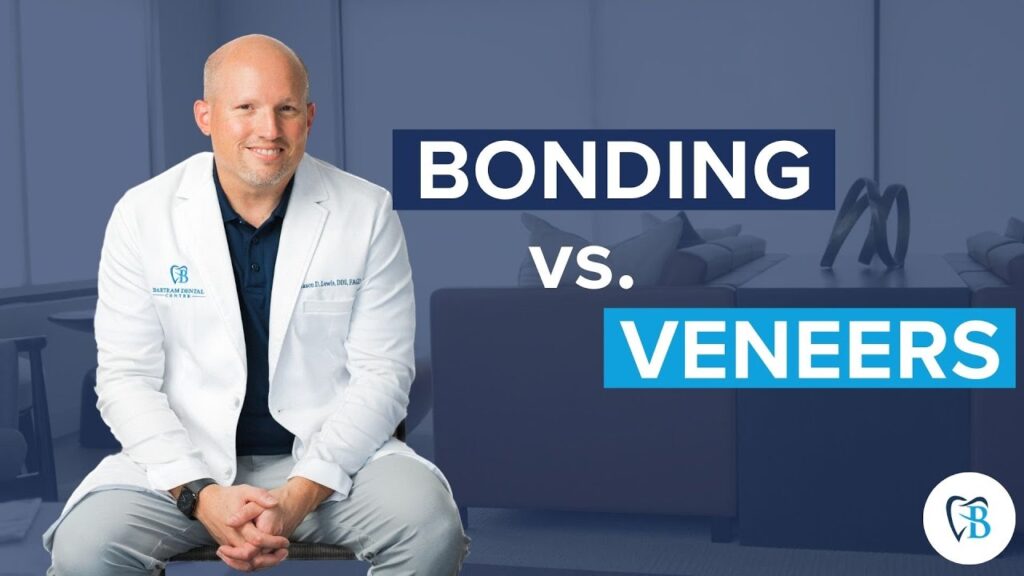Bonding vs Veneers – What’s the Difference?
Aesthetic dentistry is a type dental treatment that focuses on improving the appearance of your teeth. Two popular methods that dentists use to enhance a smile are veneers and bonding. What are the differences between these options, though?
If you’re considering improving the appearance and functionality of your smile, either option may be more suitable for your preferences. To help you decide, we’re going to cover everything you need to know about bonding vs veneers. Let’s start by covering what a veneer is.
What is a Veneer?
Veneers are thin, custom-molded shells that are crafted from materials designed to cover the front side of your teeth. Think of veneers as a protective layer for your teeth, offering both cosmetic and functional benefits.
Many people opt for veneers when they want to:
- Enhance the appearance of their teeth.
- Fill spaces between teeth.
- Repair chipped or damaged teeth.
What makes veneers unique is their strength and aesthetic appeal. In terms of appearance, veneers are often described as the closest thing to natural teeth. They are made from porcelain and possess the same strength as tooth enamel, ensuring that they not only look good but also stand the test of time.
If you are only getting one or a few veneers, they are usually colored to match the rest of your teeth. This ensures that you can maintain the appearance of your smile without worrying about them looking out of place or artificial.
Understanding Bonding
Dental bonding is a treatment option that involves applying a tooth-colored resin to a tooth and then hardening it with a special light. This process bonds the material to the tooth to improve its overall appearance.
Benefits of Bonding:
- Quick Process: Often, dental bonding can be done in a single visit.
- Cost-Effective: It’s usually less expensive than veneers.
- Minimal Tooth Enamel Removal: Unlike veneers, which might require some enamel removal, bonding retains most of the original tooth.
However, a significant drawback to remember about bonding is that it can stain over time, especially with consumption of certain beverages. Bonding may also wear down over the course of multiple years and require more trips to the dentist to have it replaced.
Veneers vs. Bonding: The Key Differences
Durability and Lifespan
One of the most noticeable differences between veneers and bonding is their longevity. Veneers are known for their durability and can last for many years, often decades, if properly cared for. On the other hand, dental bonding, while effective, typically needs replacement every few years.
Appearance and Stain Resistance
Both veneers and bonding aim to improve the appearance of teeth, but they also differ in terms of stain resistance. One major advantage of veneers is that they do not stain easily. This means that individuals can enjoy their favorite drinks, like coffee and tea, without worrying about discoloration. Bonding, however, can sometimes stain over time, especially when exposed to certain acidic beverages and foods.
Material and Comparison
To better understand the difference in durability and appearance between the two, let’s use an analogy.
Imagine dental bonding as a piece of plastic tupperware. After multiple uses and washes, it might start to warp or discolor.
Veneers, on the other hand, can be likened to ceramic dishes. Even after countless washes, ceramics retain their shape, color, and strength. This is a testament to the durability and aesthetic quality of veneers.
Caring for Veneers and Bonding
While veneers are stronger and more durable than bonding, both do require care to maintain their appearance and functionality.
As the same for your natural teeth, practicing good oral hygiene is essential. Be sure to brush and floss regularly and maintain a check-up schedule recommended by your dentist.
Second, avoid biting into hard foods like hard candy. These can damage veneers and bonding alike, and they’re also not fun when they are stuck to your regular teeth!
Lastly, with bonded teeth, avoid stain-inducing foods and beverages. As we stated above, highly acidic consumables like coffee and tea can discolor the bonds over time and may detract from their natural-looking appearance.
Making the Right Choice for Your Teeth
So, which option is right for you – veneers or bonding? Here’s a quick guide to help you decide:
- For Long-Term Solutions: If you’re looking for a long-lasting solution that offers a natural appearance and is resistant to staining, veneers are an excellent choice.
- For Quick Fixes: If you have minor dental issues and are seeking a faster and potentially more affordable solution, dental bonding can be a suitable option.
- For Strength and Aesthetics: If you prioritize strength, durability, and a top-notch appearance, veneers might be the best choice. They offer an unparalleled combination of aesthetic appeal and strength, closely mimicking the qualities of natural teeth.
- Cost Consideration: It’s also essential to consider the cost. Veneers tend to be pricier than bonding. However, given their longevity and durability, many people find them to be a worthwhile investment in the long run.
Ultimately, the decision comes down to the individual person, their dental needs, and their financial situation. As you’re deciding, consult with your dentist about your options. They may offer financial alternatives like monthly payment plans to help you more easily afford the cost of something more expensive like veneers.
Get Veneers and Bonding in Jacksonville
At Bartram Dental, we proudly serve St. Johns and the broader Jacksonville community by providing a wide range of aesthetic dentistry services, including bonding and veneers. If you are looking for more information about either treatment or you are ready to make your decision, schedule an appointment with us today.



